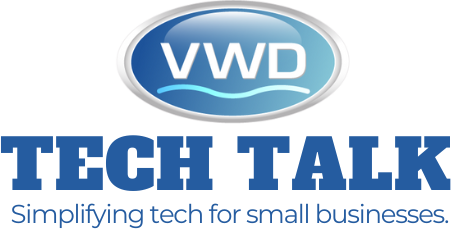Page speed is a critical factor in digital marketing success. A fast-loading website enhances user experience, boosts engagement, and improves search engine rankings. Studies show that 53% of mobile users abandon sites that take over three seconds to load. Slow pages frustrate visitors, increase bounce rates, and hurt conversions. Prioritizing speed aligns with effective digital marketing strategies by ensuring your audience stays engaged.
Impact on SEO
Search engines like Google prioritize fast websites. Page speed is a ranking factor, especially for mobile searches. Faster sites improve crawlability, allowing search engines to index content efficiently. This boosts organic traffic, a cornerstone of digital marketing. Optimizing speed ensures your site ranks higher, attracting more potential customers.
User Experience and Conversions
A seamless user experience drives conversions. Slow pages disrupt the customer journey, leading to lost sales. For example, a one-second delay can reduce conversions by 7%. Fast sites keep users engaged, encouraging them to explore products or services. Speed optimization directly supports digital marketing goals by increasing leads and revenue.
Optimize Images for Speed
Large images slow down websites. Compress images using tools like TinyPNG or ImageOptim without sacrificing quality. Use modern formats like WebP, which offer smaller file sizes. Lazy loading ensures images load only when visible, reducing initial page load time. These steps enhance site performance, supporting digital marketing efforts.
Minimize HTTP Requests
Each element on a page—images, scripts, stylesheets—requires an HTTP request. Too many requests slow down your site. Combine CSS and JavaScript files to reduce requests. Use CSS sprites to merge multiple images into one. Fewer requests mean faster load times, improving user retention and marketing outcomes.
Enable Browser Caching
Browser caching stores static files like images and scripts on users’ devices. This reduces load times for returning visitors. Set cache expiration dates using tools like .htaccess or plugins like W3 Total Cache. Caching improves speed, enhances user experience, and supports consistent engagement, a key digital marketing metric.
Leverage Content Delivery Networks (CDNs)
CDNs store your site’s data on servers worldwide, delivering content from the closest server to the user. This reduces latency and speeds up load times. Services like Cloudflare or Akamai are easy to integrate. CDNs improve global accessibility, ensuring your digital marketing campaigns reach diverse audiences effectively.
Optimize CSS and JavaScript
Unoptimized CSS and JavaScript files bloat your site. Minify these files to remove unnecessary characters, spaces, and comments. Tools like UglifyJS or CSSNano streamline code. Defer non-essential JavaScript to load after the main content. Optimized code boosts speed, enhancing user engagement and SEO performance.
Reduce Server Response Time
Slow server response times hinder page speed. Choose a reliable hosting provider with fast servers. Optimize databases by cleaning up unused data and indexing tables. Use tools like GTmetrix to monitor server performance. Faster responses improve user satisfaction, supporting digital marketing goals like lead generation.
Implement AMP for Mobile
Accelerated Mobile Pages (AMP) create lightweight versions of web pages for faster mobile loading. AMP strips unnecessary elements, prioritizing content delivery. This improves mobile user experience, which is crucial for digital marketing as mobile traffic dominates. Implement AMP using plugins like AMP for WordPress to boost mobile performance.
Compress Files with GZIP
GZIP compression reduces file sizes before they’re sent to users’ browsers. Enable GZIP on your server to compress HTML, CSS, and JavaScript files. Most hosting providers support this feature, and tools like WP Rocket simplify setup. Compression speeds up page delivery, enhancing user retention and marketing success.
Prioritize Above-the-Fold Content
Above-the-fold content is what users see first. Optimize it to load quickly using techniques like inline CSS for critical styles. Prioritizing this content ensures users engage immediately, reducing bounce rates. This aligns with digital marketing strategies by keeping visitors on your site longer.
Monitor and Test Regularly
Regular testing ensures your site stays fast. Use tools like Google PageSpeed Insights, Lighthouse, or Pingdom to analyze performance. Test across devices and browsers to identify bottlenecks. Continuous monitoring helps maintain speed, supporting digital marketing by ensuring a consistent user experience.
Avoid Heavy Plugins
Plugins add functionality but can slow your site. Audit plugins regularly and remove unnecessary ones. Choose lightweight alternatives, like WP Fastest Cache, over heavier caching plugins. Minimizing plugin bloat improves speed, ensuring your digital marketing campaigns perform optimally.
Optimize for Mobile First
With over 60% of web traffic from mobile devices, mobile optimization is non-negotiable. Use responsive design to ensure your site adapts to all screen sizes. Test mobile speed with tools like Google’s Mobile-Friendly Test. A fast mobile site boosts engagement, driving digital marketing success.
Use Lightweight Themes
Heavy website themes with excessive features slow down pages. Choose lightweight, performance-focused themes like Astra or GeneratePress. Avoid themes with bloated code or unnecessary animations. A lean theme improves speed, enhancing user experience and supporting digital marketing goals.
Reduce Redirects
Redirects create additional HTTP requests, slowing down your site. Minimize redirects by updating internal links to point directly to the correct URLs. Use tools like Screaming Frog to identify and fix redirect chains. Fewer redirects improve speed, keeping users engaged with your marketing content.
Integrate Speed with Content Marketing
Fast pages amplify content marketing efforts. High-quality blog posts, videos, or infographics lose impact if pages load slowly. Ensure your content delivery is seamless by optimizing speed. This drives traffic and engagement, key metrics for successful digital marketing campaigns.
Boost Social Media Engagement
Social media marketing relies on driving traffic to your site. Slow pages discourage clicks from social platforms like Instagram or TikTok. Optimize speed to ensure users stay engaged after clicking your links. Fast sites improve social media campaign performance, increasing brand visibility.
Enhance PPC Campaigns
Pay-per-click (PPC) ads drive traffic, but slow landing pages reduce conversions. Optimize landing page speed to match ad expectations. Tools like Google Ads integrate with PageSpeed Insights to monitor performance. Fast pages improve ad quality scores, lowering costs and boosting digital marketing ROI.
Partner with Venice Web Design
Improving page speed is a cornerstone of top digital marketing strategies, driving better SEO, user engagement, and conversions. From image optimization to CDNs, every step enhances your online presence. For businesses seeking expert help, Venice Web Design offers tailored digital marketing services to elevate your brand.
Our team specializes in website optimization, SEO, and creative strategies to maximize performance. With a proven track record, as evidenced by client testimonials praising our professionalism and results, Venice Web Design ensures your site is fast, user-friendly, and marketing-ready. Contact us at venicewebdesign.com to transform your digital strategy today.


